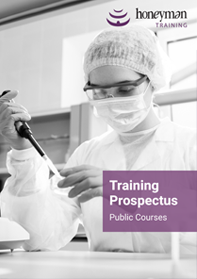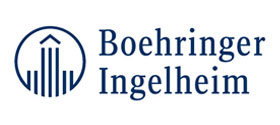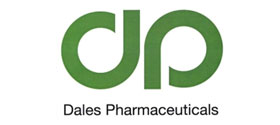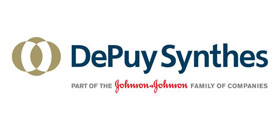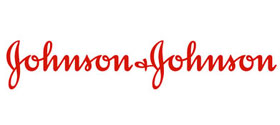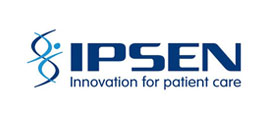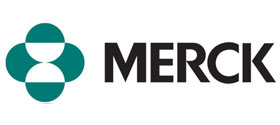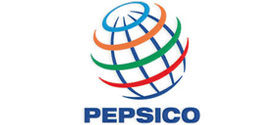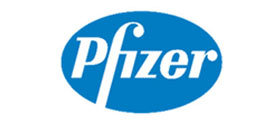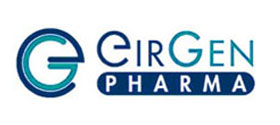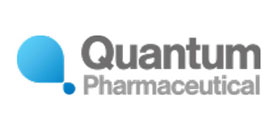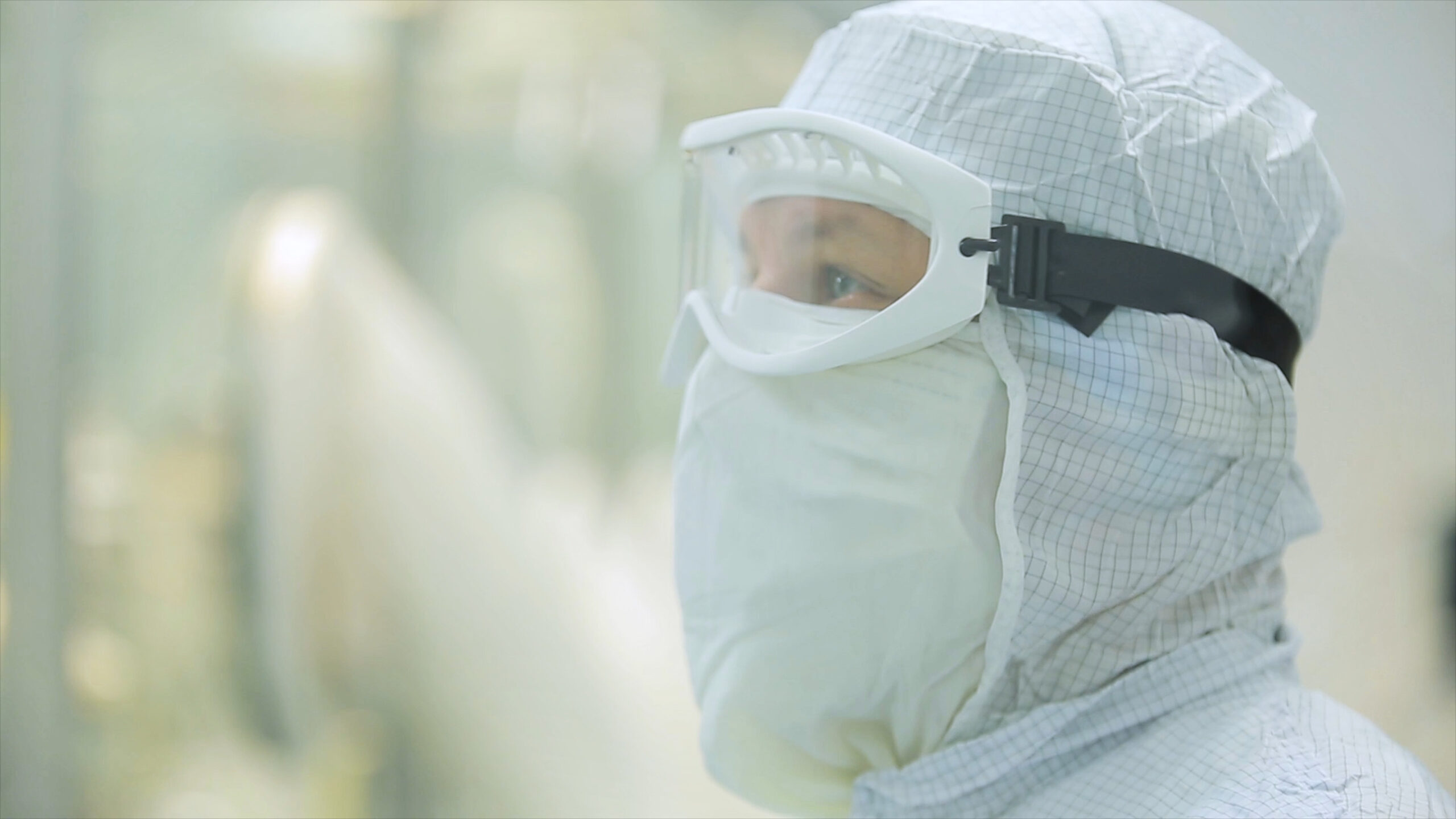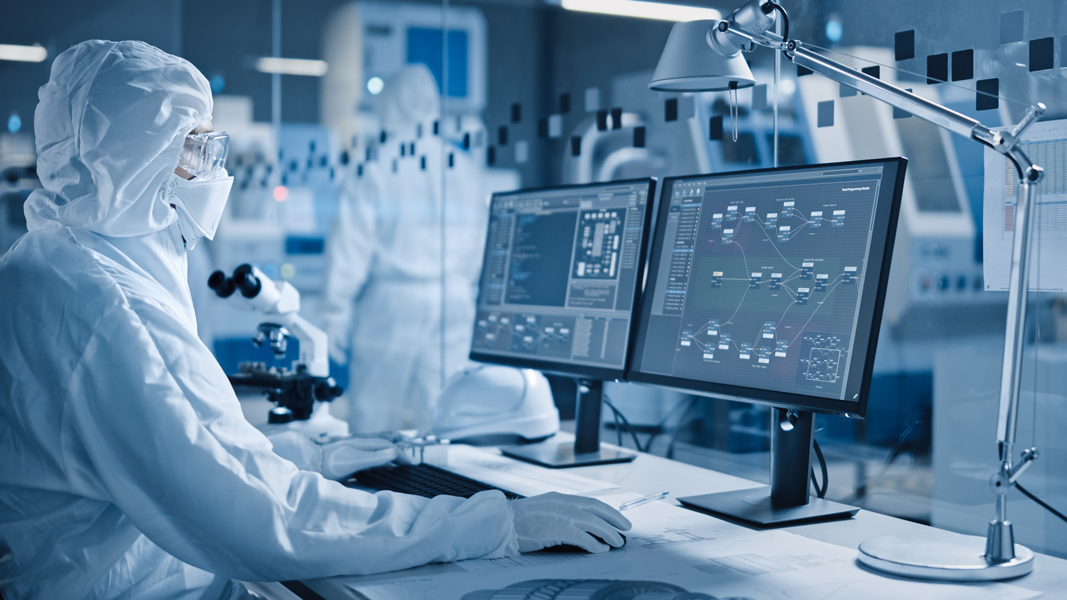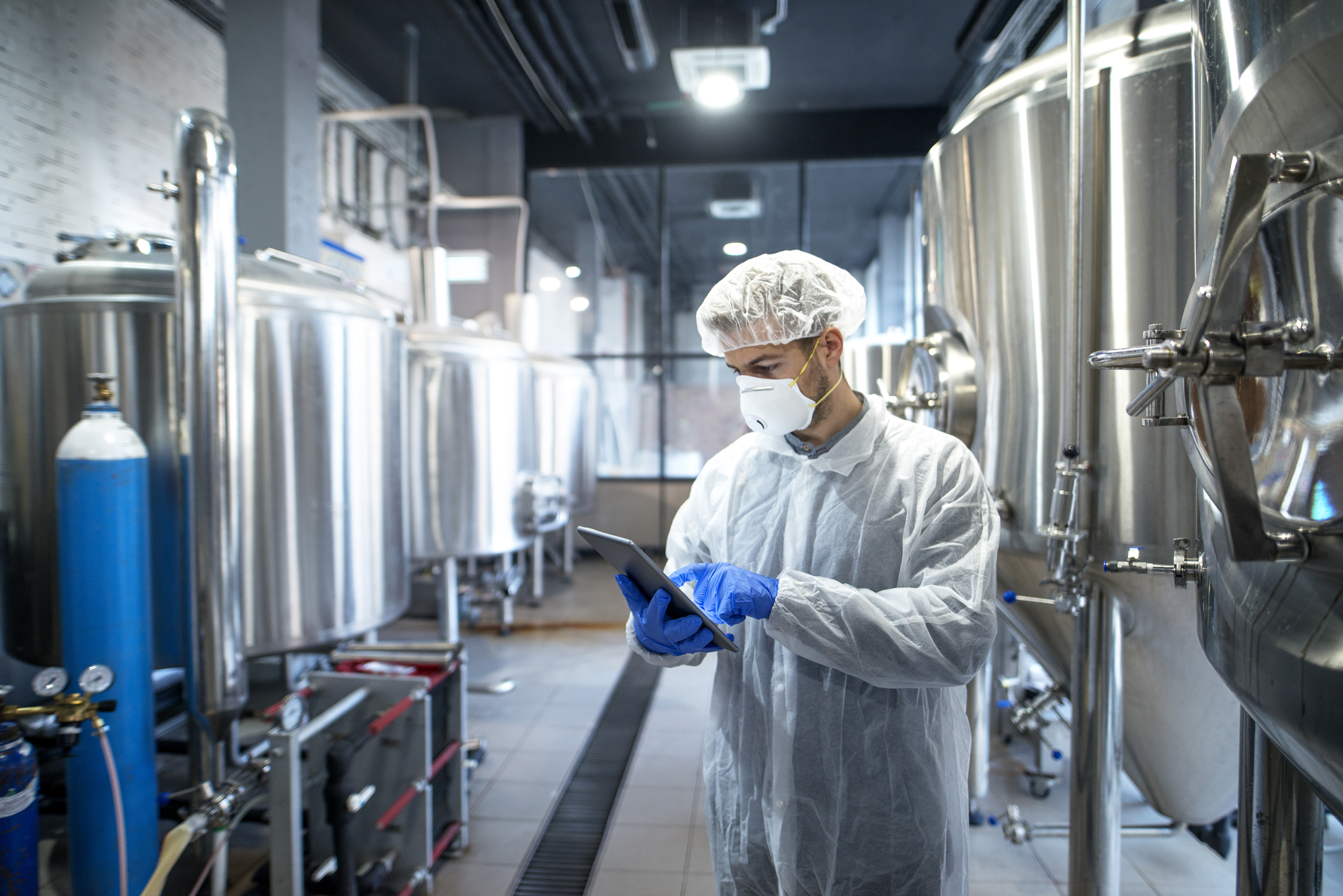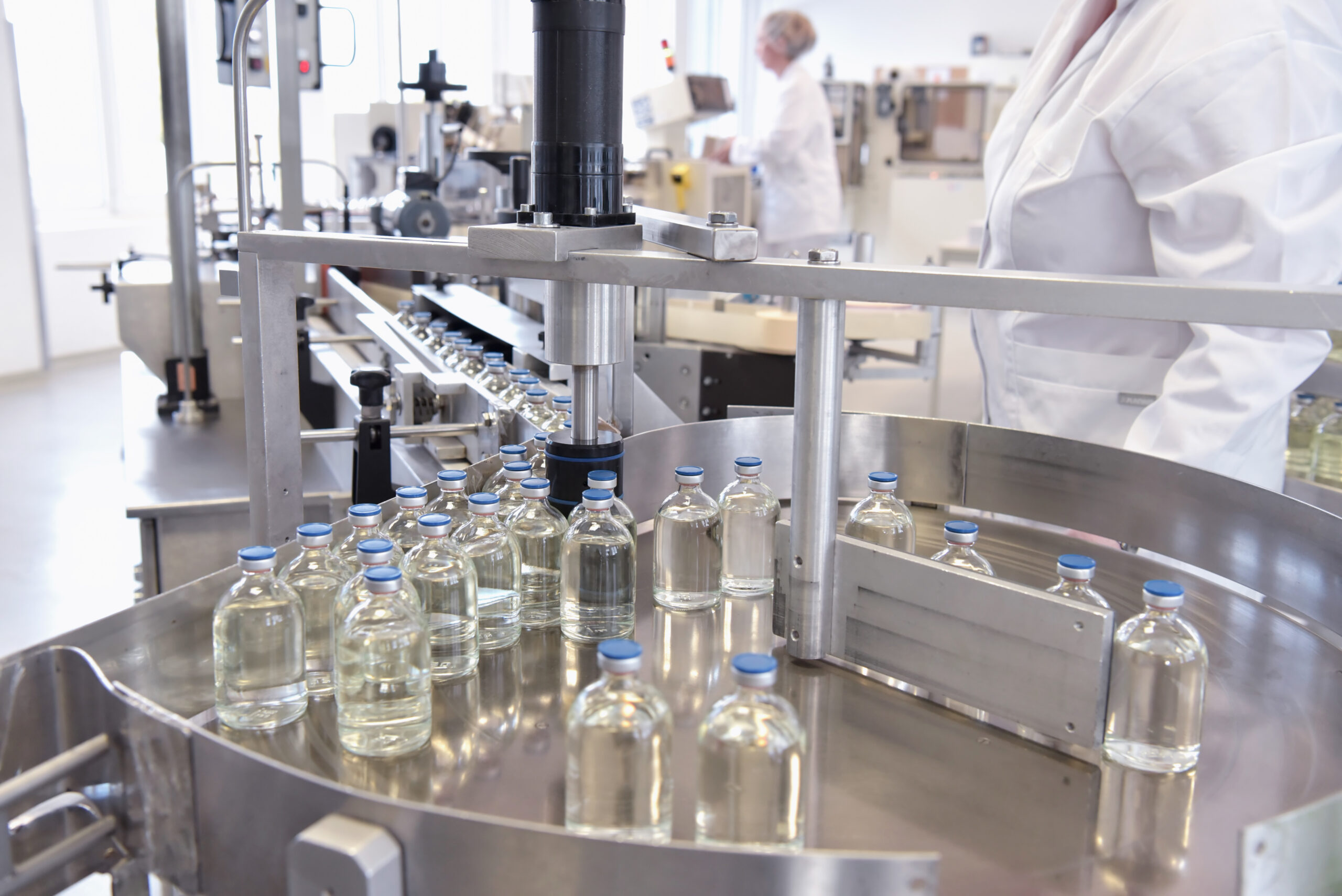Glossary (European) – Manufacture of Sterile Medicinal Products
+ Book Online Now
Good Manufacturing Practice (GMP) for Medicinal Products

EU Good Manufacturing Practice (GMP) Guide Annex 1 Manufacture of Sterile Medicinal Products – Glossary of terms
The final version of EU Good Manufacturing Practice (GMP) Annex 1 Manufacture of Sterile Medicinal Products was issued in September 2022. The document contains a new Glossary of Terms which we have included on our website. The terms and definitions are as cited in EU GGMP Annex 1 (2022)1, the latest issue of which can be found at:
Good Manufacturing Practice (GMP) Glossary A-B:
Airlock – An enclosed space with interlocked doors, constructed to maintain air pressure control between adjoining rooms (generally with different air cleanliness standards). The intent of an airlock is to preclude ingress of particle matter and microorganism contamination from a lesser controlled area.
Action limit – An established relevant measure (e.g. microbial, or airborne particle limits) that, when exceeded, should trigger appropriate investigation and corrective action based on the investigation.
Alert level – An established relevant measure (e.g. microbial, or airborne particle levels) giving early warning of potential drift from normal operating conditions and validated state, which does not necessarily give grounds for corrective action but triggers appropriate scrutiny and follow-up to address the potential problem. Alert levels are established based on routine and qualification trend data and are periodically reviewed. The alert level can be based on a number of parameters including adverse trends, individual excursions above a set limit and repeat events.
Aseptic preparation / processing – The handling of sterile product, containers and/or devices in a controlled environment in which the air supply, materials and personnel are regulated to prevent microbial, endotoxin/pyrogen and particle contamination.
Aseptic Process Simulation (APS) – A simulation of the entire aseptic manufacturing process in order to verify the capability of the process to assure product sterility. Includes all aseptic operations associated with routine manufacturing, e.g. equipment assembly, formulation, filling, lyophilization and sealing processes as necessary.
Asepsis – A state of control attained by using an aseptic work area and performing activities in a manner that precludes microbial contamination of the exposed sterile product.
Bacterial retention testing – This test is performed to validate that a filter can remove bacteria from a gas or liquid. The test is usually performed using a standard organism, such as Brevundimonas diminuta at a minimum concentration of 107 Colony Forming Units/cm2.
Barrier – A physical partition that affords aseptic processing area (usually grade A) protection by separating it from the background environment. Such systems frequently use in part or totally the Barrier Technologies known as RABS or isolators.
Bioburden – The total number of microorganisms associated with a specific item such as personnel, manufacturing environments (air and surfaces), equipment, product packaging, raw materials (including water), in-process materials, or finished products.
Bio-decontamination – A process that eliminates viable bioburden via use of sporicidal chemical agents.
Biological Indicators (BI) – A population of microorganisms inoculated onto a suitable medium (e.g. solution, container or closure) and placed within a steriliser or load or room locations to determine the sterilisation or disinfection cycle efficacy of a physical or chemical process. The challenge microorganism is selected and validated based upon its resistance to the given process. Incoming lot D-value, microbiological count and purity define the quality of the BI.
Blow-Fill-Seal (BFS) – A technology in which containers are formed from a thermoplastic granulate, filled with product, and then sealed in a continuous, integrated, automatic operation. The two most common types of BFS machines are the Shuttle type (with Parison cut) and the Rotary type (Closed Parison).
Good Manufacturing Practice (GMP) Glossary C – D:
Campaign manufacture – A manufacture of a series of batches of the same product in sequence in a given period of time with strict adherence to established and validated control measures.
Classified area – An area that contains a number of cleanrooms (see cleanroom definition).
Cleaning – A process for removing contamination e.g. product residues or disinfectant residues.
Clean area – An area with defined particle and microbiological cleanliness standards usually containing a number of joined cleanrooms.
Cleanroom – A room designed, maintained, and controlled to prevent particle and microbial contamination of drug products. Such a room is assigned and reproducibly meets an appropriate air cleanliness level.
Cleanroom classification – A method of assessing the level of air cleanliness against a specification for a cleanroom or clean air equipment by measuring the total particle concentration.
Cleanroom qualification – A method of assessing the level of compliance of a classified cleanroom or clean air equipment with its intended use.
Closed system – A system in which the product is not exposed to the surrounding environment. For example, this can be achieved by the use of bulk product holders (such as tanks or bags) that are connected to each other by pipes or tubes as a system, and where used for sterile products, the full system is sterilised after the connections are made. Examples of these can be (but are not limited to) large scale reusable systems, such as those seen in active substance manufacturing, or disposable bag and manifold systems, such as those seen in the manufacture of biological products. Closed systems are not opened until the conclusion of an operation. The use of the term “closed systems” in this Annex does not refer to systems such as RABS or isolator systems.
Colony Forming Unit (CFU) – A microbiological term that describes a single detectable colony that originates from one or more microorganisms. Colony forming units are typically expressed as CFU per ml for liquid samples, CFU per m3 for air sample and CFU per sample for samples captured on solid medium such as settle or contact plates.
Contamination – The undesired introduction of impurities of a microbiological nature (quantity and type of microorganisms, pyrogen), or of foreign particle matter, into or onto a raw material, intermediate, active substance or drug product during production, sampling, packaging or repackaging, storage or transport with the potential to adversely impact product quality.
Contamination Control Strategy (CCS) – A planned set of controls for microorganisms, endotoxin/pyrogen and particles, derived from current product and process understanding that assures process performance and product quality. The controls can include parameters and attributes related to active substance, excipient and drug product materials and components, facility and equipment operating conditions, in-process controls, finished product specifications, and the associated methods and frequency of monitoring and control.
Corrective intervention – An intervention that is performed to correct or adjust an aseptic process during its execution. These may not occur at a set frequency in the routine aseptic process. Examples include such as clearing component jams, stopping leaks, adjusting sensors, and replacing equipment components.
Critical surfaces – Surfaces that may come directly into contact with, or directly affect, a sterile product or its containers or closures. Critical surfaces are rendered sterile prior to the start of the manufacturing operation, and sterility is maintained throughout processing.
Critical zone – A location within the aseptic processing area in which product and critical surfaces are exposed to the environment.
Critical intervention – An intervention (corrective or inherent) into the critical zone.
D-value – The value of a parameter of sterilisation (duration or absorbed dose) required to reduce the number of viable organisms to 10 per cent of the original number.
Dead leg – Length of non-circulating pipe (where fluid may remain static) that is greater than 3 internal pipe diameters.
Decommission – When a process, equipment or cleanroom are closed and they will not be used again.
Decontamination – The overall process of removal or reduction of any contaminants (chemical, waste, residue or microorganisms) from an area, object, or person. The method of decontamination used (e.g. cleaning, disinfection, sterilisation) should be chosen and validated to achieve a level of cleanliness appropriate to the intended use of the item decontaminated. See also Bio-decontamination.
Depyrogenation – A process designed to remove or inactivate pyrogenic material (e.g. endotoxin) to a specified minimum quantity.
Disinfection – The process by which the reduction of the number of microorganisms is achieved by the irreversible action of a product on their structure or metabolism, to a level deemed to be appropriate for a defined purpose.
Good Manufacturing Practice (GMP) Glossary E-H:
Endotoxin – A pyrogenic product (i.e. lipopolysaccharide) present in the Gram negative bacterial cell wall. Endotoxin can lead to reactions in patients receiving injections ranging from fever to death.
Equilibration time – Period which elapses between the attainment of the sterilisation temperature at the reference measurement point and the attainment of the sterilisation temperature at all points within the load.
Extractables – Chemical entities that migrate from the surface of the process equipment, exposed to an appropriate solvent at extreme conditions, into the product or material being processed.
First Air – Refers to filtered air that has not been interrupted prior to contacting exposed product and product contact surfaces with the potential to add contamination to the air prior to reaching the critical zone.
Filter Integrity test – A test to confirm that a filter (product, gas or HVAC filter) retain their retentive properties and have not been damaged during handling, installation or processing.
Form-Fill-Seal (FFS) –An automated filling process, typically used for terminally sterilised products, which constructs the primary container out of a continuous flat roll of packaging film while simultaneously filling the formed container with product and sealing the filled containers in a continuous process. FFS processes may utilize a single web system (where a single flat roll of film is wrapped around itself to form a cavity), or a dual web system (where two flat rolls of film are brought together to form a cavity), often with the aid of vacuum moulds or pressurised gases. The formed cavity is filled, sealed and cut into sections. Films typically consist of a polymeric material, polymeric coated foil or other suitable material.
Gowning qualification – A programme that establishes, both initially and on a periodic basis, the capability of an individual to don the complete gown.
Grade A air supply – Air which is passed through a filter qualified as capable of producing grade A total particle quality air, but where there is no requirement to perform continuous total particle monitoring or meet grade A viable monitoring limits. Specifically used for the protection of fully stoppered vials where the cap has not yet been crimped.
HEPA filter – High efficiency particulate air filter specified in accordance with a relevant international standard.
Good Manufacturing Practice (GMP) Glossary I-O:
Inherent interventions – An intervention that is an integral part of the aseptic process and is required for either set-up, routine operation and/or monitoring (e.g. aseptic assembly, container replenishment, environmental sampling). Inherent interventions are required by procedure or work instruction for the execution of the aseptic process.
Intrinsic sterile connection device – A device that reduces the risk of contamination during the connection process; these can be mechanical or fusion sealing.
Isokinetic sampling head – A sampling head designed to disturb the air as little as possible so that the same particles go into the nozzle as would have passed the area if the nozzle had not been there (i.e. the sampling condition in which the mean velocity of the air entering the sample probe inlet is nearly the same (± 20 percent) as the mean velocity of the airflow at that location).
Isolator – An enclosure capable of being subject to reproducible interior bio-decontamination, with an internal work zone meeting grade A conditions that provides uncompromised, continuous isolation of its interior from the external environment (e.g. surrounding cleanroom air and personnel). There are two major types of isolators:
- Closed isolator systems exclude external contamination of the isolator’s interior by accomplishing material transfer via aseptic connection to auxiliary equipment, rather than use of openings to the surrounding environment. Closed systems remain sealed throughout operations.
- Open isolator systems are designed to allow for the continuous or semi-continuous ingress and/or egress of materials during operations through one or more openings. Openings are engineered (e.g. using continuous overpressure) to exclude the entry of external contaminant into the isolator.
Leachables – Chemical entities that migrate into products from the product contact surface of the process equipment or containers under normal condition of use and/or storage.
Local isolates – Suitably representative microorganisms of the site that are frequently recovered through environmental monitoring within the classified zone/areas especially grade A and B areas, personnel monitoring or positive sterility test results.
Lyophilization – A physical-chemical drying process designed to remove solvents, by way of sublimation, from both aqueous and non-aqueous systems, primarily to achieve product or material stability. Lyophilization is synonymous to the term freeze-drying.
Manual aseptic processing– An aseptic process where the operator manually compounds, fills, places and /or seals an open container with sterile product.
Operator – Any individual participating in the processing operation, including line set-up, filling, maintenance, or other personnel associated with manufacturing activities.
Overkill sterilisation – A process that is sufficient to provide at least a 12 log10 reduction of microorganisms having a minimum D-value of 1 minute.
Good Manufacturing Practice (GMP) Glossary P-Z:
Parison – The “tube” of polymer extruded by the BFS machine from which containers are formed.
Pass-through hatch – Synonymous with airlock (see airlock definition) but typically smaller in size.
Patient – Human or animal including participants in a clinical trial.
Post-aseptic processing terminal heat treatment – A terminal moist heat process employed after aseptic processing which has been demonstrated to provide a sterility assurance level (SAL) ≤10-6 but where the requirements of steam sterilisation (for example, F0≥8 min) are not fulfilled. This may also be beneficial in the destruction of viruses that may not be removed through filtration.
Pyrogen – A substance that induces a febrile reaction in patients receiving injections;
Rapid Transfer System/Port (RTP) – A System used for the transfer of items into RABS or isolators that minimizes the risk to the critical zone. An example would be a rapid transfer container with an alpha/beta port.
Raw material – Any ingredient intended for use in the manufacture of a sterile product, including those that may not appear in the final drug product.
Restricted Access Barrier System (RABS) – System that provides an enclosed, but not fully sealed, environment meeting defined air quality conditions (for aseptic processing grade A), and using a rigid-wall enclosure and integrated gloves to separate its interior from the surrounding cleanroom environment. The inner surfaces of the RABS are disinfected and decontaminated with a sporicidal agent. Operators use gloves, half suits, RTPs and other integrated transfer ports to perform manipulations or convey materials to the interior of the RABS. Depending on the design, doors are rarely opened, and only under strictly pre-defined conditions.
Single Use Systems (SUS) – Systems in which product contact components are used only once to replace reusable equipment such as stainless steel transfer lines or bulk containers. SUS covered in this document are those that are used in manufacturing processes of sterile products and are typically made up of disposable components such as bags, filters, tubing, connectors, storage bottles and sensors.
Sporicidal agent – An agent that destroys bacterial and fungal spores when used in sufficient concentration for specified contact time. It is expected to kill all vegetative microorganisms.
Sterile product – For purpose of this guidance, sterile product refers to one or more of the sterilised elements exposed to aseptic conditions and ultimately making up the sterile active substance or finished sterile product. These elements include the containers, closures, and components of the finished drug product. Or, a product that is rendered sterile by a terminal sterilisation process.
Sterilising grade filter – A filter that, when appropriately validated, will remove a defined microbial challenge from a fluid or gas producing a sterile effluent. Usually such filters have a pore size equal or less than 0.22 µm.
Terminal Sterilisation – The application of a lethal sterilising agent or conditions to a product in its final container to achieve a predetermined sterility assurance level (SAL) of 10⁻⁶ or better (e.g. the theoretical probability of there being a single viable microorganism present on or in a sterilised unit is equal to or less than 1 x 10-6 (one in a million)).
Turbulent airflow – Air that is not unidirectional. Turbulent air in cleanrooms should flush the cleanroom via mixed flow dilution and ensure maintenance of acceptable air quality.
Unidirectional airflow – An airflow moving in a single direction, in a robust and uniform manner, and at sufficient speed, to reproducibly sweep particles away from the critical processing or testing area.
Unidirectional Airflow (UDAF) unit – A cabinet supplied with filtered unidirectional airflow (previously referred to as a Laminar Airflow Unit or LAF).
Worst case – A set of conditions encompassing processing limits and circumstances, including those within standard operating procedures, that pose the greatest chance of process or product failure (when compared with ideal conditions). Such conditions have the highest potential to, but do not necessarily always result in product or process failure.
Water system – A system for producing, storing and distributing water, usually compliant to a specific pharmacopeia grade (e.g. purified water and water for injection (WFI)).
Z-value – The temperature difference that leads to a 10-fold change in the D-value of the biological indicators.
References
1. The rules governing medicinal products in the European Union –Volume 4 EU guidelines to good manufacturing practice – medicinal products for human and veterinary use – Annex 1 – Manufacture of sterile medicinal products. European Commission, Brussels, 2022.
Further information
More detailed information and explanation all aspects of current Good Manufacturing Practice (cGMP) relating to pharmaceutical-grade contamination control are included in the following Honeyman Training courses that are delivered virtually, or on-site and in person by arrangement:
- Aseptic Processing: Principles in Practice®
- Biotechnology: Principles in Practice®
- Cleanrooms: Principles in Practice®
- Critical Factors for Sterile Product Manufacturing
- Current Requirements for Cleaning Validation
- Microbial Risk Management During Cleanroom Operations
- Pharmaceutical Microbiology for Non-Microbiologists
- Pharmaceutical Sterilisation Training: Principles in Practice®
- Pharmaceutical Water Systems: Principles in Practice®
KEYWORDS for Good Manufacturing Practice (GMP): Annex 1, Airlock, Action limit, Alert level, Aseptic preparation / processing, Aseptic Process Simulation (APS), Asepsis, Bacterial retention testing, Barrier, Bioburden, Bio-decontamination, Biological Indicators (BI), Blow-Fill-Seal (BFS), Campaign manufacture, Classified area, Cleaning, Clean area, Cleanroom, Cleanroom classification, Cleanroom qualification, Closed system, Colony Forming Unit (CFU), Contamination, Contamination Control Strategy (CCS), Corrective intervention, Critical surfaces, Critical zone, Critical intervention, D-value, Dead leg, Decommission, Decontamination, Depyrogenation, Disinfection, Endotoxin, Equilibration time, Extractables, First Air, Filter Integrity test, Form-Fill-Seal (FFS), Good Manufacturing Practice, Gowning qualification, Grade A air supply, HEPA filter, Inherent interventions, Intrinsic sterile connection device, Isokinetic sampling head, Isolator, Leachables, Local isolates, Lyophilization, Manual aseptic processing, Operator, Overkill sterilisation, Parison, Pass-through hatch, Patient, Post-aseptic processing terminal heat treatment, Pyrogen, Rapid Transfer System/Port (RTP), Raw material, Restricted Access Barrier System (RABS), Single Use Systems (SUS), Sporicidal agent, Sterile Product, Sterilising grade filter, Terminal Sterilisation, Turbulent airflow, Unidirectional airflow, Unidirectional Airflow (UDAF) unit, Worst case, Water system, Z-value.
Testimonials
Training prospectus 2024
We have produced an overview of the course information available online, available here in a handy PDF Prospectus.

 Testimonials
Testimonials

